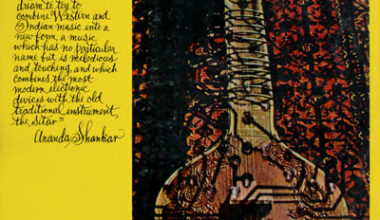
The artists that live on the fringes, the forward (or sideways) thinkers, have always drawn me in. This fascination really kicked in at university when, in the early 2000s, I presented a radio show with Erotic Volvo of Birmingham wrong-pop band Misty’s Big Adventure. As a kind of musicologist of the weird, his selections were never predictable and often a revelation.
During one late night stint, he pulled out a copy of volume one of Raymond Scott’s ‘Soothing Sounds For Baby’, the early 60s electronic experimentation that foretold ambient music 15 years early.
The album, produced in partnership with the Gesell Institute Of Child Development and intended as an “aural toy”, came in three volumes, but we had just the one to play on our show.
As the needle dropped on opening tune ‘Lullaby’, I was mesmerised and intrigued by music that preceded everything I knew of early electronic music. Coinciding with my new-found fascination with the mad electronica of Warp and Rephlex records, ‘Soothing Sounds For Baby’ changed everything I thought I knew about the start point for some of my favourite music.
Although the album had been a flop on release, with reviews declaring it “skull splitting”, ‘Soothing Sounds’ was a wonderous find in the middle of our post-everything culture. With everything being wilfully recycled, finding the original source material felt like finding treasure.
Forged on Scott’s own proto-synth creations the lulling sounds completely fulfil Brian Eno’s “ambient music” dictum of being as “ignorable as it is interesting”. How could a tune called ‘Sleepy Time’ be anything else? ‘Music Box’ picks up the pace, with a franticness that indicates that this “electronic music” could eventually be “pop music” or, even, fill dancefloors. ‘Nursery Rhyme’ is a jovial romp built up of just under six minutes of electronic chirps, blips and bleeps, while ‘Tic Toc’ simply emulates a ticking clock for over eight minutes, a concept that itself is ground-breaking for a commercially available album.
Because of this music’s initial failure to connect, Scott retreated and is often overlooked as a pioneer in the field. ‘Soothing Sounds For Baby’ laid the foundation that made the future possible. In 2002, we just wished we had a real-life baby to test the sounds on.
Fast forward to 2018, and my week-old daughter is transfixed by ‘Lullaby’. From the floating opening notes, her crying stops, and a serene look glazes over her face. The baby is soothed.





